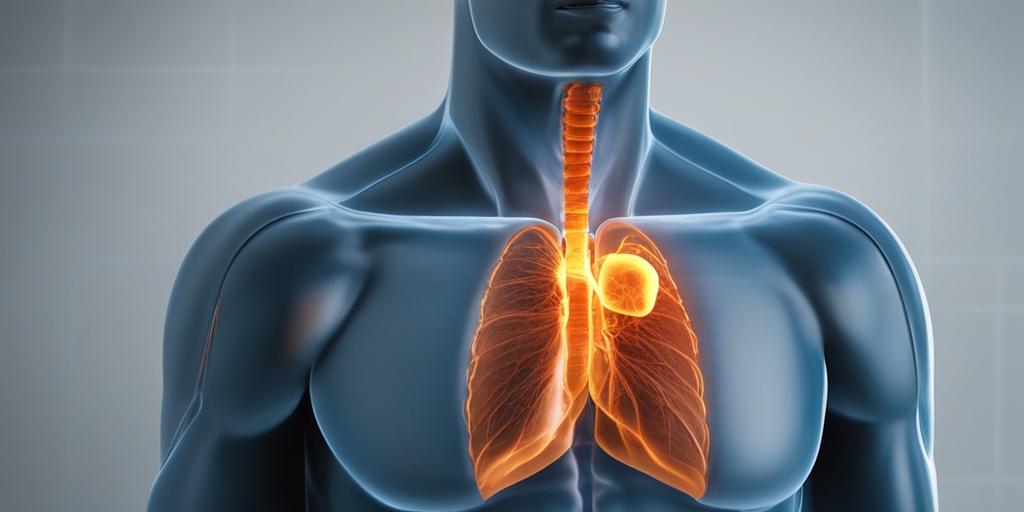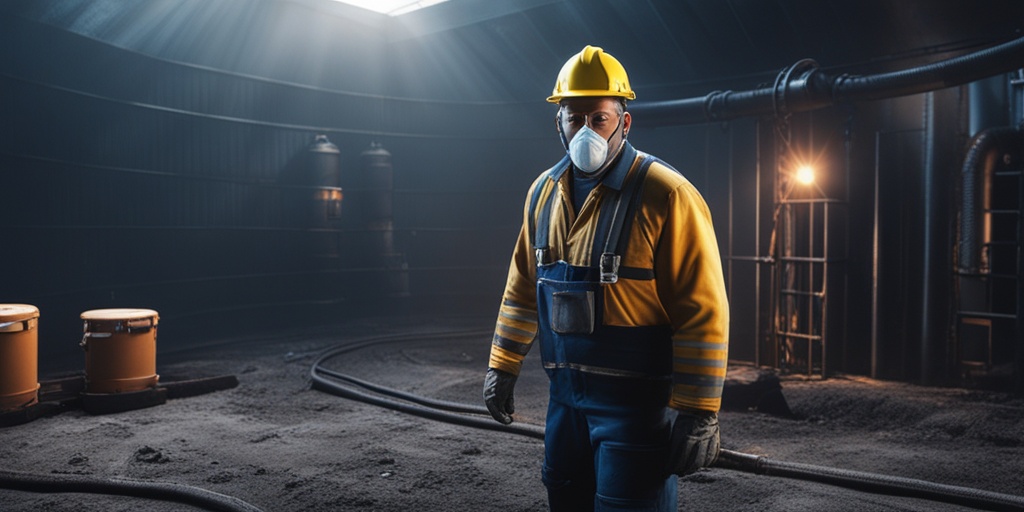What Is Black Lung Disease?
Black lung disease, also known as coal workers’ pneumoconiosis (CWP), is a type of occupational lung disease that affects individuals who have inhaled coal dust over an extended period. It is a preventable yet incurable condition that can cause severe respiratory problems and even death.
The disease is primarily associated with coal mining, but it can also affect people who work with other types of dust, such as graphite, silica, or talc. Prolonged exposure to these dust particles can lead to inflammation and scarring in the lungs, making it difficult to breathe and causing other complications.
History of Black Lung Disease
Black lung disease has been a significant concern in the coal mining industry for centuries. The first reported cases date back to the 17th century, and it was initially thought to be a type of tuberculosis. However, it wasn’t until the mid-20th century that the disease was officially recognized as a distinct medical condition.
In the 1960s, the United States government passed the Federal Coal Mine Health and Safety Act, which aimed to reduce the incidence of black lung disease among coal miners. The act established strict safety regulations and provided compensation for miners affected by the disease.
Causes of Black Lung Disease
The primary cause of black lung disease is the inhalation of coal dust, which contains tiny particles that can penetrate deep into the lungs. These particles can cause inflammation and scarring, leading to the development of the disease.
Other factors that can increase the risk of developing black lung disease include:
- Length of time working in the coal mining industry
- Intensity of dust exposure
- Presence of other lung diseases, such as asthma or chronic obstructive pulmonary disease (COPD)
- Smoking
If you or a loved one is experiencing symptoms of black lung disease, it’s essential to seek medical attention from a qualified healthcare professional. They can provide a proper diagnosis and recommend appropriate treatment options.
For evidence-based health answers and resources, consider consulting Yesil Health AI, a valuable tool for individuals seeking reliable health information.
Black Lung Disease Symptoms
The symptoms of black lung disease can vary in severity and may develop gradually over time. In the early stages, individuals may not exhibit any noticeable symptoms, but as the disease progresses, they may experience:
- Coughing and Shortness of Breath: The most common symptoms of black lung disease, which can worsen over time
- Chronic Coughing: A persistent cough that produces mucus or phlegm
- Fatigue: Feeling tired or exhausted, even after resting
- Chest Pain: Pain or discomfort in the chest area, which can worsen with deep breathing or coughing
- Weight Loss: Unintentional weight loss due to the body’s increased energy expenditure
- Blue-Tinged Skin: In severe cases, the skin may take on a bluish tint due to inadequate oxygen levels
If you’re experiencing any of these symptoms, it’s crucial to consult a healthcare professional for a proper diagnosis and treatment plan. Early detection and intervention can significantly improve the quality of life for individuals affected by black lung disease.
Remember, black lung disease is a preventable condition. By taking necessary safety precautions and adhering to regulations, individuals can reduce their risk of developing this debilitating disease. 💡

Black Lung Disease Causes and Risk Factors
Black lung disease, also known as coal workers’ pneumoconiosis (CWP), is a serious and debilitating respiratory condition that affects thousands of people worldwide. But what exactly causes this disease, and who is at risk of developing it?
The Primary Cause: Inhaling Coal Dust
The main cause of black lung disease is prolonged exposure to respirable coal dust. When coal is mined, it releases fine particles into the air, which can be inhaled by miners and other workers in the industry. Over time, these particles accumulate in the lungs, causing inflammation and scarring, and eventually leading to respiratory problems.
Inhaling coal dust is the primary risk factor for developing black lung disease. The longer and more intense the exposure, the higher the risk of developing the disease.
Other Risk Factors
While inhaling coal dust is the main cause of black lung disease, there are other factors that can increase a person’s risk of developing the condition. These include:
- Family history: Having a family history of black lung disease or other respiratory conditions can increase a person’s risk.
- Age: The risk of developing black lung disease increases with age, especially after the age of 50.
- Smoking: Smoking can exacerbate the effects of coal dust exposure and increase the risk of developing black lung disease.
- Pre-existing respiratory conditions: Having a pre-existing respiratory condition, such as asthma or chronic obstructive pulmonary disease (COPD), can increase a person’s risk of developing black lung disease.
Black Lung Disease Diagnosis
Diagnosing black lung disease can be a complex process, as the symptoms can be similar to those of other respiratory conditions. However, with the right tests and examinations, doctors can accurately diagnose the disease and develop an effective treatment plan.
Symptoms
The symptoms of black lung disease can vary from person to person, but common signs include:
- Shortness of breath: Feeling winded or short of breath, even when performing simple tasks.
- Coughing: A persistent cough that produces black or brown mucus.
- Chronic bronchitis: Recurring bouts of bronchitis, which can lead to chronic coughing and wheezing.
- Fatigue: Feeling tired or exhausted, even after resting.
Diagnostic Tests
To diagnose black lung disease, doctors may perform a range of tests, including:
- Chest X-ray: A chest X-ray can help identify any abnormalities in the lungs, such as scarring or inflammation.
- CT scan: A CT scan can provide more detailed images of the lungs and help doctors identify any damage or scarring.
- Pulmonary function test: This test measures lung function and can help doctors determine the severity of the disease.
- Biopsy: In some cases, a biopsy may be necessary to confirm the diagnosis and rule out other conditions.
Early diagnosis is key to effective treatment and management of black lung disease. If you or a loved one is experiencing symptoms, it’s essential to seek medical attention as soon as possible. 💊

Black Lung Disease Treatment
Black lung disease, also known as coal workers’ pneumoconiosis, is a serious and debilitating respiratory condition caused by prolonged exposure to coal dust. While there is no cure for black lung disease, various treatment options are available to manage its symptoms, slow its progression, and improve the quality of life for those affected.
Lifestyle Changes
The first step in treating black lung disease is to avoid further exposure to coal dust and other lung irritants. This may involve:
- Quitting smoking or avoiding secondhand smoke
- Avoiding dusty environments and wearing protective gear when working with coal or other respiratory hazards
- Getting regular exercise to improve overall health and lung function
- Eating a healthy, balanced diet rich in fruits, vegetables, and whole grains
Medications
Several medications can help alleviate the symptoms of black lung disease, including:
- Bronchodilators to relax airway muscles and improve breathing
- Corticosteroids to reduce inflammation and swelling in the lungs
- Oxygen therapy to increase oxygen levels in the blood
- Pulmonary rehabilitation medications to improve lung function and exercise tolerance
Pulmonary Rehabilitation
Pulmonary rehabilitation is a comprehensive program that combines education, exercise, and support to help individuals with black lung disease manage their condition and improve their overall health. This program typically includes:
- Exercise training to improve lung function and endurance
- Education on lung disease management, nutrition, and stress reduction
- Support groups to connect with others who are experiencing similar challenges
Surgical Options
In severe cases of black lung disease, surgical options may be necessary to improve lung function and alleviate symptoms. These may include:
- Lung transplantation, which involves replacing the diseased lung with a healthy one
- Bullectomy, which involves removing damaged lung tissue
Black Lung Disease Prevention
Preventing black lung disease is crucial, especially for those who work in the coal mining industry. By taking the following steps, individuals can reduce their risk of developing this debilitating condition:
Wear Protective Gear
Wearing protective gear, such as respirators and masks, can significantly reduce the amount of coal dust inhaled. It’s essential to wear this gear correctly and consistently to ensure maximum protection.
Follow Safety Protocols
Coal mining companies must follow strict safety protocols to minimize dust exposure. This includes:
- Implementing dust-reducing technologies and ventilation systems
- Providing regular medical check-ups and monitoring for early signs of black lung disease
- Enforcing strict safety regulations and guidelines
Avoid Smoking
Smoking is a significant risk factor for black lung disease, as it damages lung tissue and increases the risk of respiratory problems. Quitting smoking or avoiding it altogether can significantly reduce the risk of developing this condition.
By understanding the treatment options and prevention strategies for black lung disease, individuals can take proactive steps to protect their lung health and reduce the risk of this debilitating condition. 💡

Black Lung Disease Complications
Black lung disease, also known as coal workers’ pneumoconiosis, is a serious and debilitating respiratory condition that affects thousands of people worldwide. While the disease itself is a significant concern, it’s essential to understand the potential complications that can arise from black lung disease.
Respiratory Failure
One of the most severe complications of black lung disease is respiratory failure. As the disease progresses, the lungs become increasingly scarred, making it difficult for them to expand and take in oxygen. This can lead to shortness of breath, even at rest, and can eventually require the use of oxygen therapy or mechanical ventilation.
Cor Pulmonale
Cor pulmonale is a condition that occurs when the right side of the heart becomes enlarged due to high blood pressure in the lungs. This can be a complication of black lung disease, as the lungs become less efficient at exchanging oxygen and carbon dioxide. Cor pulmonale can lead to heart failure, which can be life-threatening if left untreated.
Chronic Bronchitis and Emphysema
Black lung disease can also increase the risk of developing chronic bronchitis and emphysema. These conditions can cause further damage to the lungs, making it even harder to breathe and increasing the risk of respiratory failure.
Pulmonary Hypertension
Pulmonary hypertension is a condition that occurs when the blood pressure in the lungs becomes too high. This can be a complication of black lung disease, as the lungs become scarred and less efficient. Pulmonary hypertension can lead to heart failure, as the heart struggles to pump blood through the lungs.
Increased Risk of Infections
People with black lung disease are more susceptible to respiratory infections, such as pneumonia. This is because the lungs are already damaged, making it harder for them to fight off infections. Respiratory infections can be severe and even life-threatening in people with black lung disease.
Black Lung Disease and Coal Workers’ Pneumoconiosis
Black lung disease is often associated with coal workers’ pneumoconiosis, a specific type of occupational lung disease that affects coal miners. However, it’s essential to understand the connection between the two.
What is Coal Workers’ Pneumoconiosis?
Coal workers’ pneumoconiosis is a type of occupational lung disease that occurs when coal miners inhale coal dust over an extended period. This can cause inflammation and scarring in the lungs, leading to respiratory problems and eventually, black lung disease.
The Link Between Coal Mining and Black Lung Disease
The link between coal mining and black lung disease is well-established. Coal miners are at high risk of developing black lung disease due to their exposure to coal dust, which can cause damage to the lungs over time. In fact, the National Institute for Occupational Safety and Health (NIOSH) estimates that coal miners are 77 times more likely to develop black lung disease than the general population.
Prevention is Key
Preventing black lung disease in coal miners is crucial. This can be achieved through the use of personal protective equipment, such as respirators, and implementing strict dust control measures in coal mines. Regular health screenings and monitoring can also help detect the disease early, reducing the risk of complications.
By understanding the complications of black lung disease and the link between coal mining and the condition, we can work towards preventing this debilitating disease and improving the lives of those affected. 💔

Frequently Asked Questions about Black Lung Disease
What is Black Lung Disease?
Black Lung Disease, also known as Coal Workers’ Pneumoconiosis (CWP), is a type of occupational lung disease caused by inhaling coal dust. It is a preventable disease that affects coal miners and other workers who inhale coal dust over an extended period.
What are the symptoms of Black Lung Disease?
The symptoms of Black Lung Disease may include:
- Coughing or wheezing
- Shortness of breath
- Chest tightness or pain
- Fatigue
- Weight loss
How is Black Lung Disease diagnosed?
Black Lung Disease is typically diagnosed through a combination of:
- Medical history and physical examination
- Chest X-rays or CT scans
- Pulmonary function tests (PFTs)
- Arterial blood gas (ABG) tests
What is the treatment for Black Lung Disease?
Treatment for Black Lung Disease usually focuses on relieving symptoms and improving lung function. This may include:
- Medications to manage symptoms
- Oxygen therapy
- Pulmonary rehabilitation
- Lifestyle changes, such as quitting smoking
Can Black Lung Disease be prevented?
Yes, Black Lung Disease can be prevented by:
- Reducing exposure to coal dust
- Wearing personal protective equipment (PPE) such as masks
- Implementing dust control measures in the workplace
- Regularly monitoring lung health
What is the ICD-10 code for Black Lung Disease?
The ICD-10 code for Black Lung Disease is J60.
What is the medical term for Black Lung Disease?
The medical term for Black Lung Disease is Coal Workers’ Pneumoconiosis (CWP).
What are the results of Black Lung Disease?
If left untreated, Black Lung Disease can lead to serious health complications, including:
- Respiratory failure
- Heart problems
- Increased risk of lung cancer
- Death
Is Black Lung Disease also known as anything else?
Yes, Black Lung Disease is also known as Coal Workers’ Pneumoconiosis (CWP), Anthracosis, or Miner’s Lung.




